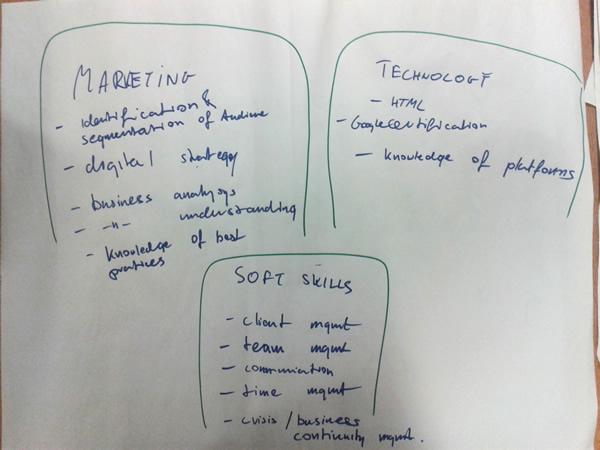Managing a remote writing team can be a rewarding yet challenging endeavor. By implementing structured processes and fostering effective communication, you can create an environment where writers thrive and produce high-quality content consistently. This article will guide you through practical strategies to build and maintain a productive remote writing team.
Hiring Auditions
Put out writer auditions to assemble a team of freelance article writers. This method allows you to sample various writing styles and voices without committing to long-term contracts. Using freelance platforms and scrutinizing writing samples, you can build a skilled team that matches your business' tone and style.
When holding auditions, ask for a short piece on a relevant subject. This tests not only their writing capability but also their ability to follow instructions. Be clear about what you're looking for:
- The topic
- The tone
- The deadline
Examine the writing samples carefully. Look for writers who display:
- Technical proficiency
- Storytelling ability
- Strong command of your desired style
Keep an eye out for those who can infuse creativity into their content while sticking to the guidelines.
Through this approach, you'll quickly identify writers who can produce high-quality articles that engage your audience and reinforce your brand's voice. Implement this audition process, and you'll have a solid, reliable remote team ready to elevate your content strategy.
Effective Communication
Setting up a centralized communication method is crucial for managing a remote writing team. Tools like Slack, Google Docs, or specialized platforms such as Camayak can create a streamlined, efficient communication system.
| Tool | Key Features |
|---|---|
| Slack | Digital office, channels, direct messaging |
| Google Docs | Real-time collaboration, comments, suggestions |
| Camayak | Assignments, submissions, payments, editorial feedback |
Adopting a centralized communication tool fosters a sense of community within your dispersed team. Everyone knows where to go for information and whom to ask for help. Deadlines and tasks become clear, minimizing miscommunications and missed deadlines.
Set up your chosen communication tool and watch as it transforms your remote writing team into a cohesive unit. Consistent, clear communication is the key to ensuring your content strategy hits all the right notes every time.
Content Calendar
A content calendar is an essential tool for managing your remote writing team effectively. It creates a visual workflow that outlines what needs to be written, by whom, and when it's due. This master plan ensures every piece of content is delivered on time and maintains consistency in your publishing schedule.
Start by selecting a tool that fits your team's needs, such as:
- Google Sheets for smaller teams
- Trello or Asana for more complex requirements
These tools offer interactive boards and timelines to track each stage of the content creation process.
Populate your calendar with key dates, including:
- Upcoming holidays
- Product launches
- Significant industry events
Mark these milestones and plan content around them in advance. This foresight allows your writers to craft timely, relevant articles that resonate with your audience.
Assign deadlines for each stage of content creation, from brainstorming to final edits. Breaking down the process makes the workload manageable and ensures no step is overlooked. Engage your team in the planning process by encouraging writers to pitch ideas and topics, fostering a sense of ownership and collaboration.
Color-code assignments or use labels to indicate the status of each piece. This transparency keeps the entire team informed about the progress of all projects and highlights any potential bottlenecks early.
"Remember to maintain flexibility. While a content calendar provides structure, be prepared to adapt as needed to accommodate shifts in market trends or priorities."
By maintaining a well-organized content calendar, you're building a solid foundation for your content strategy. Your remote writing team will thrive, knowing they have a clear plan and manageable deadlines, leading to improved quality and consistency across all your published work.
Topic Submissions
Give your writers creative leeway through a system of monthly topic submissions. Provide broad topics or specific keywords and let your writers develop their ideas. This approach fosters a sense of ownership and creative investment, encouraging a more enthusiastic and engaged team.
Start by defining broad topics that align with your business goals and content strategy. For example, if you run a travel blog, you might assign general topics like:
- "Sustainable Travel Tips"
- "Hidden Gems of Europe"
Pair these broad topics with relevant keywords to ensure the content remains focused and optimized for search engines.
Communicate these guidelines clearly to your writers and encourage them to pitch their unique angles on these themes. This allows them to tap into their creativity and expertise, producing content that's both valuable and original.
Use a shared document or project management tool where writers can submit their ideas. Tools like Trello or Asana can be effective in organizing these submissions and tracking their progress.
Review each submission thoughtfully and provide constructive feedback. This practice helps writers hone their skills and ensures that their pitches align with your brand's voice and goals. Foster an environment where feedback is viewed as a path to improvement rather than criticism.
Assigning broad topics and keywords reduces the risk of content duplication and ensures a diverse range of articles. It keeps the content fresh and varied, appealing to different segments of your audience. Writers feel more motivated to deliver their best work when they have room to express their individuality within the provided parameters.
This practice also reduces the burden of micromanagement, freeing up your time to focus on bigger strategic issues. Trust your writers to bring their A-game, and you'll likely be rewarded with richer, more engaging content.
By nurturing a sense of ownership among your writers and providing them with the flexibility to explore their ideas, you ensure that your content strategy resonates with authenticity and depth, attracting and retaining a loyal audience.

Content Submission Platforms
Utilizing a content submission platform like Zerys can streamline your workflow and improve efficiency. These platforms allow you to manage writer assignments, communications, and submissions in one place.
Zerys offers a central hub for your remote writing team, where you can:
- Assign tasks
- Communicate with writers
- Review submissions
This consolidation eliminates the need to chase writers across various channels or worry about lost emails.
The platform's interface acts as a control center, allowing you to post assignments with specific guidelines and deadlines. Writers upload their completed work directly, making it easy to access all drafts, provide feedback, and request revisions without endless email chains.
Communication with writers is simplified, as you can discuss assignments and clarify instructions within the platform. This integrated approach improves collaboration and reduces the risk of overlooking important details.
Key features of Zerys:
- Tools for reviewing and editing submissions
- Ability to highlight changes and add comments
- Direct editing capabilities
This streamlined process cuts down on time wasted in back-and-forth exchanges.
The platform helps you track the status of each assignment, from drafting to final approval. This visibility allows you to identify potential bottlenecks early and maintain a consistent flow of high-quality content.
By centralizing operations and streamlining processes, platforms like Zerys allow you to focus on refining your content strategy and engaging with your audience, while your team benefits from clear communication and an organized workflow.
Standard Operating Procedures
Implementing an onboarding program with a comprehensive 'writers operations playbook' provides clear direction for new remote writers. This playbook serves as a guide to your business processes, payment procedures, and tool usage, ensuring writers understand expectations and can contribute effectively from day one.
Key Components of a Writers Operations Playbook:
- Content Creation Workflow
- Payment Procedures
- Tool Usage Guide
- FAQ Section
- Examples and Templates
The playbook should outline your content creation workflow, from ideation to publication. Include details on topic assignment, research processes, drafting standards, and the review cycle. Consider providing a visual timeline or flowchart to represent task progression clearly.
Explain payment procedures transparently. Outline the payment schedule, specify dates for invoice submissions, and detail the invoicing process. Clarify any required tax documents to ensure compliance and avoid surprises.
Introduce the tools and platforms your team will use, such as Grammarly for proofreading or Slack for communication. Provide practical guides and tutorials, ensuring writers are comfortable using them within your workflow.
Include a FAQ section covering common questions, preferred writing styles, and contact information for specific queries. This proactive approach helps writers become self-sufficient more quickly.
Enhance the playbook with real examples and templates of well-executed articles. Writers can refer to these to better understand your expectations and standards.
"A comprehensive operations playbook sets a strong foundation for remote writers to thrive, contributing to the collective success of your content strategy."
Consider a short evaluation at the end of the onboarding period to ensure comprehension and readiness. This step reinforces the information and provides feedback on the effectiveness of your onboarding program.
Remember to regularly update the playbook to reflect any changes in processes, new tools, or revised guidelines. Encourage feedback from your writers to keep it relevant and valuable.
Holding Accountable
Implementing an effective accountability system for writers contributes to a high-quality content pipeline and reduces time spent on revisions. This approach fosters a professional environment where excellence is expected and consistently delivered.
Key Elements of an Accountability System:
- Tracking System
- Regular Feedback
- Clear Consequences
- Documentation
- Positive Reinforcement
Introduce a tracking system to monitor each writer's progress. Use a shared spreadsheet or project management tool to log assigned tasks, deadlines, submission dates, and article status. This transparency provides a clear overview of performance and allows for easy check-ups.
Provide regular, consistent feedback. Set up a routine for evaluating work and sharing constructive criticism. Review submissions in detail, pointing out strengths and areas for improvement. This applies to both content quality and adherence to deadlines and guidelines.
Establish clear consequences for non-compliance. Implement a graduated system of penalties, starting with warnings and potentially escalating to reduced assignments or contract termination. Communicate these consequences clearly during onboarding.
Document all key points of feedback and instances of non-compliance. This documentation serves as a record of communications, helps track improvements or recurring issues, and provides evidence if significant action becomes necessary.
Balance accountability with positive reinforcement. Celebrate writers who consistently meet or exceed expectations through bonuses, additional high-visibility assignments, or public acknowledgment. This positive atmosphere can motivate your entire team to perform better.
Consider implementing a mentorship or buddy system for newer writers. Pair them with experienced team members who exemplify adherence to your standards. This approach can foster growth and provide tangible examples of successful performance.
| Feedback Type | Frequency | Purpose |
|---|---|---|
| Quick Check-in | Weekly | Address immediate concerns |
| Detailed Review | Monthly | Comprehensive performance analysis |
| Performance Evaluation | Quarterly | Long-term progress assessment |
Develop standard templates for feedback to ensure consistency and fairness. Having a set structure for feedback sessions can streamline the process and make it beneficial for both you and the writers.
Remain adaptable and open to feedback from your writers on how these processes impact them. This creates a dialogue that can lead to improvements in your system and shows your team that their opinions matter.
By implementing a robust accountability system, you cultivate a culture of reliability and excellence in your remote writing team. This proactive approach saves time, aligns team efforts with business goals, and continuously improves the quality of your content.
Outcome vs. Reality
Micromanaging your remote writing team can stifle creativity and cause frustration. Instead, success lies in focusing on the quality and quantity of their output rather than closely monitoring their every move. This approach requires setting clear goals and empowering your writers to find their unique paths to achieving them.
Begin by setting clear expectations. Communicate your goals in terms of both quality and quantity. Outline the standards you expect for each piece of content, including:
- Tone
- Style
- Technical accuracy
- Deadlines
- Volume of work
This provides a clear framework within which your writers can operate autonomously.
Share your overall content strategy, the themes you want to explore, and how each piece fits into this broader context. When writers understand the reasoning behind their tasks, they're more motivated and can better align their efforts with your vision.
Consider employing a results-oriented approach to performance evaluation. Rather than tracking every hour they spend writing, focus on assessing the finished products. Ask yourself:
- Did they meet the deadlines?
- Is the content engaging and error-free?
- Does it resonate with your audience?
These are the metrics that truly matter and should be the basis of any feedback or adjustments needed.
Empowering your writers requires giving them the freedom to explore their creativity within the established guidelines. Every writer has their unique method of producing content. By allowing writers to choose their best approach, you foster a sense of ownership and accountability.
"Trust is the foundation of this approach. When writers feel trusted, they're more likely to push their creative boundaries and produce innovative work."
Regularly review output quality to ensure standards are maintained without intrusive oversight. Schedule periodic check-ins where you discuss their work, celebrate successes, and offer constructive feedback. These sessions should be supportive rather than punitive, aimed at continuous improvement and mutual growth.
Incorporate a feedback loop. Encourage writers to provide their input on the processes, tools, and guidelines. This two-way communication improves your management techniques and makes writers feel heard and valued.
Avoid fixating on every small mistake. While it's important to address significant errors, minor imperfections can often be ironed out in the editing process. The key is to maintain a balance between vigilance and autonomy, correcting issues without overwhelming the writer with constant corrections.
By focusing on the quality and quantity of output rather than micromanaging daily activities, you empower your remote writing team to deliver high-quality work on time. This enhances productivity and fosters a more motivated and dynamic team, ultimately benefiting your content strategy and business success.1

By adopting these strategies, you'll cultivate a reliable and efficient remote writing team that consistently delivers high-quality content. Empower your writers with clear guidelines, effective tools, and constructive feedback to see your content strategy flourish.






